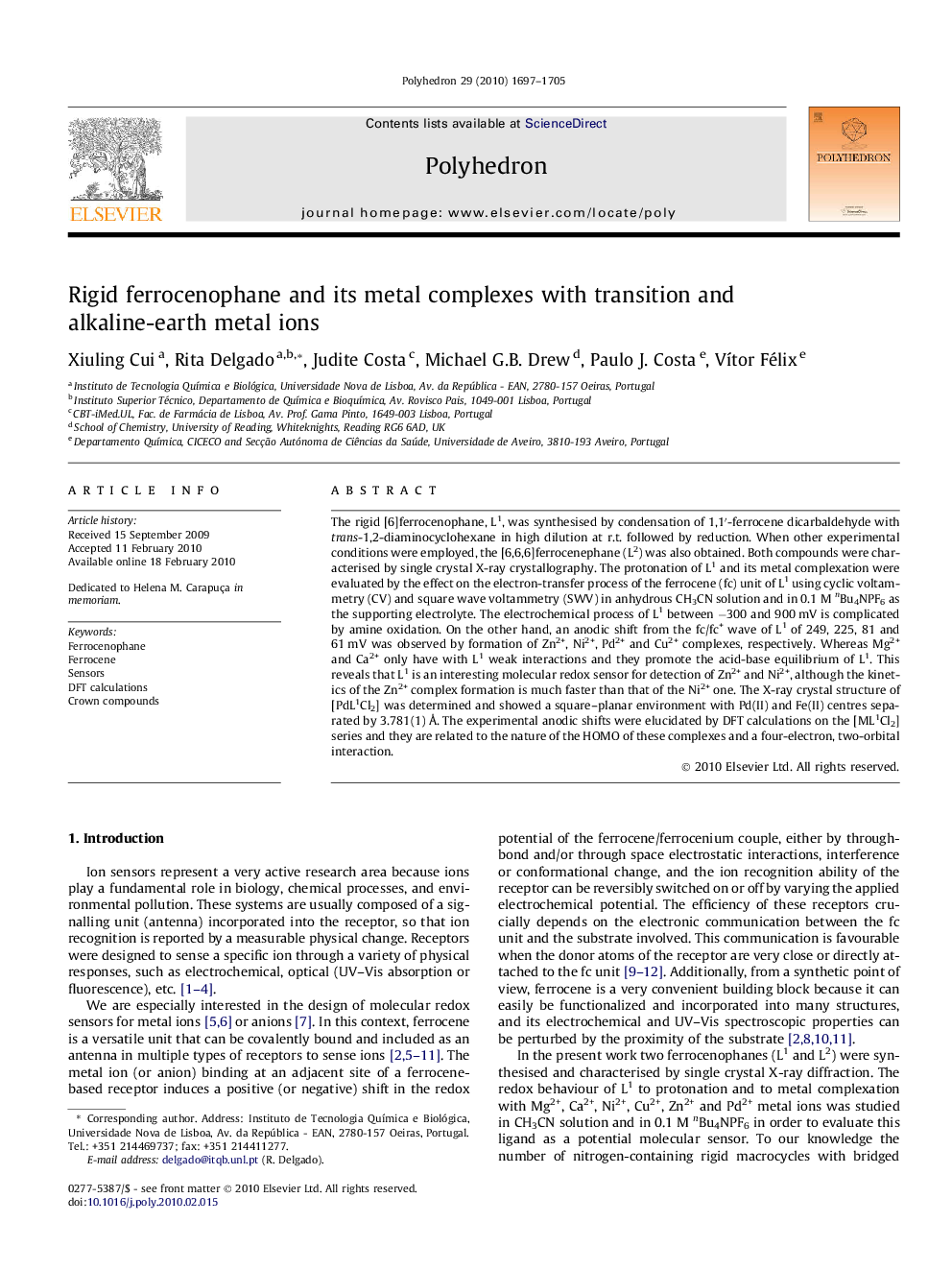| کد مقاله | کد نشریه | سال انتشار | مقاله انگلیسی | نسخه تمام متن |
|---|---|---|---|---|
| 1338977 | 979686 | 2010 | 9 صفحه PDF | دانلود رایگان |

The rigid [6]ferrocenophane, L1, was synthesised by condensation of 1,1′-ferrocene dicarbaldehyde with trans-1,2-diaminocyclohexane in high dilution at r.t. followed by reduction. When other experimental conditions were employed, the [6,6,6]ferrocenephane (L2) was also obtained. Both compounds were characterised by single crystal X-ray crystallography. The protonation of L1 and its metal complexation were evaluated by the effect on the electron-transfer process of the ferrocene (fc) unit of L1 using cyclic voltammetry (CV) and square wave voltammetry (SWV) in anhydrous CH3CN solution and in 0.1 M nBu4NPF6 as the supporting electrolyte. The electrochemical process of L1 between −300 and 900 mV is complicated by amine oxidation. On the other hand, an anodic shift from the fc/fc+ wave of L1 of 249, 225, 81 and 61 mV was observed by formation of Zn2+, Ni2+, Pd2+ and Cu2+ complexes, respectively. Whereas Mg2+ and Ca2+ only have with L1 weak interactions and they promote the acid-base equilibrium of L1. This reveals that L1 is an interesting molecular redox sensor for detection of Zn2+ and Ni2+, although the kinetics of the Zn2+ complex formation is much faster than that of the Ni2+ one. The X-ray crystal structure of [PdL1Cl2] was determined and showed a square–planar environment with Pd(II) and Fe(II) centres separated by 3.781(1) Å. The experimental anodic shifts were elucidated by DFT calculations on the [ML1Cl2] series and they are related to the nature of the HOMO of these complexes and a four-electron, two-orbital interaction.
The rigid [6]ferrocenophane, L1, and its metal complexes were studied. The experimental anodic shifts of the fc/fc+ CV wave of L1 exhibited by complex formation were elucidated by DFT calculations and were related to the nature of the HOMO of these complexes and a four-electron, two-orbital interaction.Figure optionsDownload as PowerPoint slide
Journal: Polyhedron - Volume 29, Issue 6, 19 April 2010, Pages 1697–1705